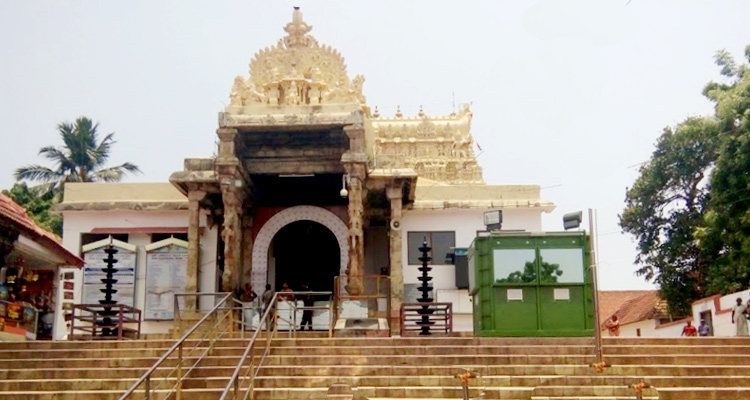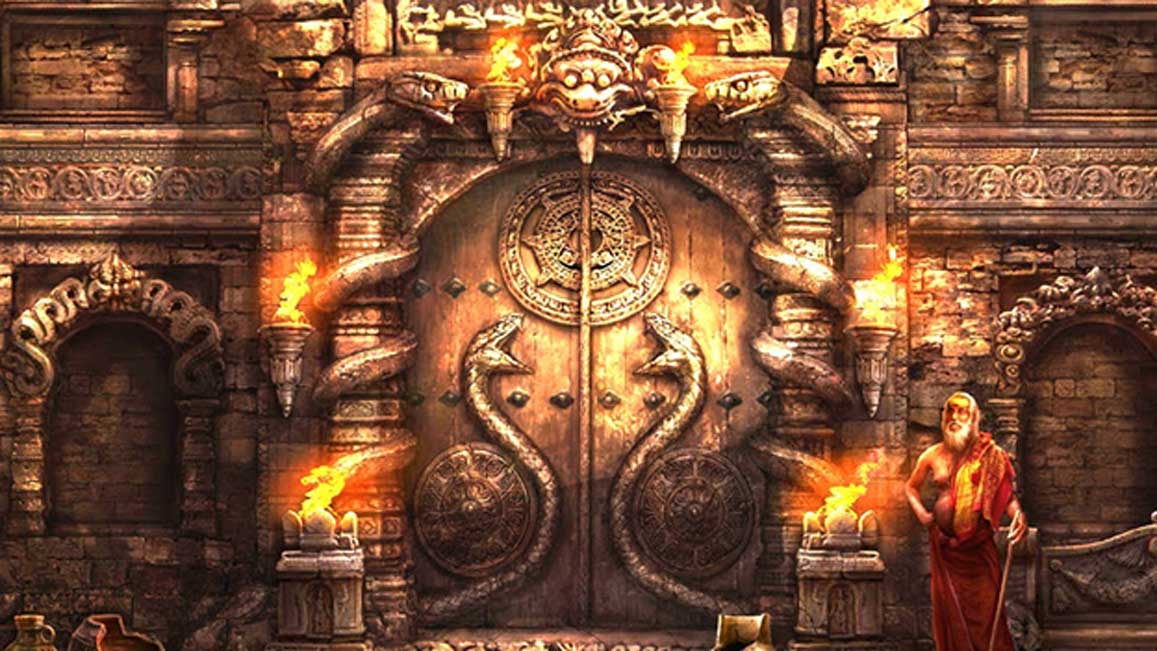Sri Padmanabhaswamy Temple: A Testament to History and Faith
 |
| Sri Padmanabhaswamy Temple |
Nestled in the enchanting landscapes of Kerala, India, the Padbanabhaswamy Temple stands out as a silent sentinel to the passage of time. Its rich history, intricate architecture, and treasure trove that defies imagination have made it a captivating subject of fascination and intrigue. Legend has it that the temple vaults hold an unimaginable treasure, accumulated over centuries by devout maharajas. In this journey through history and devotion, let's delve deeper into the mystery of this ancient temple.
A Temple Born In Antiquity
The Padmanabhaswamy Temple traces its origins back to an era lost in the annals of history. It is believed to have been in existence for over a thousand years, with its significance deepening through the ages. The temple's location in Thiruvananthapuram, Kerala's capital city, adds to its historical prominence, making it a cultural beacon in the region.
 |
| Grand entrance of Sri Padmanabhaswamy Temple |
Approaching the Padmanabhaswamy Temple, visitors are greeted by the imposing gopuram (entrance tower) that soars into the sky. Its Dravidian architecture is a marvel in itself, showcasing a symphony of sculptures, carvings, and paintings that narrate tales from Hindu mythology. Each stone of the temple echoes the craftsmanship of ancient artisans who dedicated their lives to this divine creation.
 |
| The idol of Lord Padmanabha made of pure gold |
The Legend of The Unopened Vaults
The prophecy states that one of the temple's vaults, referred to as the 'Kallara B,' would remain sealed shut until a certain event occurred. According to the legend, this door would only be opened when the kingdom of Travancore (modern-day Kerala) faced extreme peril and needed the treasures to protect itself.
The legend began to take shape in the early 18th century when the Travancore royal family assumed control over the temple. For centuries, the vaults remained sealed, with no one daring to open them. The temple's riches remained a closely guarded secret.
However, in 2011, the legend took an intriguing turn when the Supreme Court of India ordered an inventory of the temple's vaults following a public interest litigation (PIL) petition. The decision to open the vaults ignited a fierce debate, with some fearing that disturbing the temple's treasures would invite calamity upon the kingdom.
When the vaults were finally opened, the world was left in awe. The treasures within were beyond imagination. Gold idols, diamond-studded jewellery, ancient coins, and countless other priceless artefacts were discovered. Estimates of the total value of the treasures ran into billions of dollars.
The treasures unearthed not only added to the mystique of the temple but also raised questions about their historical significance and rightful ownership. Legal battles ensued, and the administration of the temple's riches became a subject of much debate.
The Unearthing of Hidden Riches
 |
| Trillion Dollar hidden treasures unearthed from the temple |
In a historic turn of events, the Supreme Court of India ordered an inventory of the temple's underground chambers in 2011, following a public interest litigation. What followed was nothing short of a fairy tale turned reality. The vaults revealed an astonishing treasure trove - an unimaginable collection of gold, silver, precious gems, and priceless artefacts. Estimates suggest that the cumulative worth of these discoveries could reach billions of dollars.
The unveiling of such astronomical wealth naturally led to intense debate and controversy. Some argued that these treasures should be utilized for societal welfare, while others insisted that they remain within the temple's sanctum, preserving the sacred bond between Lord Padmanabha and the devotees. This ongoing discussion exemplifies the complex interplay of religion, heritage, and public interest.
At the centre of this enigmatic story is a lawyer named Ananda Padmanabhan, whose passion for history led him on a quest to uncover the secrets hidden within the temple's basement. The Sri Padmanabhaswamy temple, with its towering seven-story façade adorned with intricate stone carvings, stands as a testament to the rich cultural heritage of the region. It was in this historic setting that Ananda Padmanabhan embarked on his extraordinary journey.
The Lawsuit That Shook Traditions
One fateful day in mid-October, as rain poured down on Brahmin Street, Ananda Padmanabhan stood barefoot, entranced by the temple's magnificence. He was there to witness a festival where an idol of the supreme god Vishnu was paraded around the courtyard. For devout Hindus like Padmanabhan, the temple deity is believed to reside within its walls, and offerings of flowers, incense, silver, and gold are made to honour the divine. Padmanabhan's devotion to Vishnu became the driving force behind his mission to protect the deity's treasures.
In a fascinating twist, deities in India can legally own property, although they are treated as minors and require official guardians. In the case of the Sri Padmanabhaswamy temple, the role of guardian falls to the Maharaja of Travancore. While the kingdom of Travancore no longer exists, the maharajas have continued to oversee the temple, responsible for its spiritual well-being and safeguarding the deity's wealth.
The centuries-old tradition of the royal family's management of the temple went largely unquestioned until 2007 when Ananda Padmanabhan filed a lawsuit against the temple administration on behalf of two devotees. Padmanabhan and his clients argued that the ninety-year-old Marthanda Varma, the head of the royal family, had mismanaged the temple, necessitating the appointment of a new trustee to protect the deity's wealth. What followed was a legal battle that attracted attention and controversy.
Padmanabhan's lawsuit drew support from various quarters, including the leader of a temple employees' union, who suspected that treasures had been removed from the site. This legal battle transcended mere property disputes; it became a quest to unveil the hidden history and riches of a sacred place that had held its secrets for centuries.
Conclusion
The Sri Padmanabhaswamy Temple transcends being merely a place of worship or a repository of wealth; it is a living testament to Kerala's rich heritage, architectural grandeur, and intricate dance between history and faith. It continues to be an inexplicable marvel that beckons visitors to explore its mysteries and appreciate its profound cultural significance.
Whether you are a devotee, a history enthusiast, or a curious traveller, a pilgrimage to this temple is sure to leave you in awe of the timeless treasures it guards within its ancient, sacred walls. It is a testament to the enduring spirit of devotion and the mystical allure of history.

Comments
Post a Comment